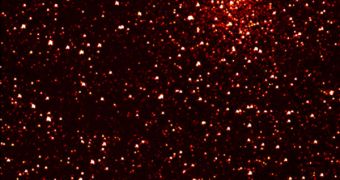The American space agency's Kepler Telescopes was one of our best bets at finding a rocky, Earth-like exoplanet around other stars. Its incredibly precise instruments were to ensure that this would happen seamlessly, but it would seem that it was precisely its scientific payload that now prevents it from actually making observations. Experts at NASA announced that noisy amplifiers in the observatory would probably not allow it to snap any real photo of its targets until at least 2011, Nature News reports.
According to the team managing the telescope, all possible efforts are currently being made to change the way in which the instrument processes data. The goal is to bypass the amplifiers, or to take as much data off of them as possible. But the experts admit that, even with them working around the clock to fix the issues, the initiative has now passed to Earth-based observers that may use their powerful antennas to detect the same type of exoplanets that Kepler was especially designed to catch.
“We're not going to be able to find Earth-size planets in the habitable zone – or it's going to be very difficult – until that [repair] work gets done,” the Kepler principal investigator, William Borucki, said. He made the announcement on Thursday at the Ames Research Center, in Moffett Field, California, during a NASA advisory council meeting. The expert explained that the 95-million-pixel photometer that is the heart of the 0.95-meter Kepler captures and relays weak signals, which need to be boosted.
This is where the amplifiers come in. They take for example the light variations registered in the brightness of a star when a small planet moves in front of it, and then amplify them beyond a certain threshold. The process makes these changes more prone to scientific observations. However, when the amplifiers – whose goal is to simply increase the strength of the signal – malfunction, they add unwanted “noise,” or distortions, to the signals. This makes the quality of the data average at best and unusable at worst.

 14 DAY TRIAL //
14 DAY TRIAL //